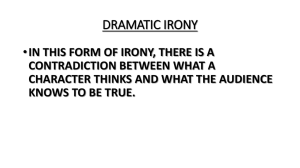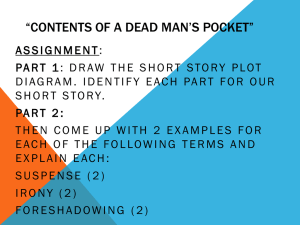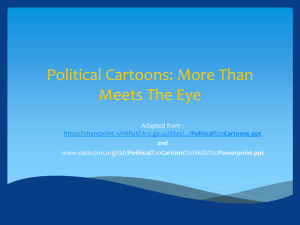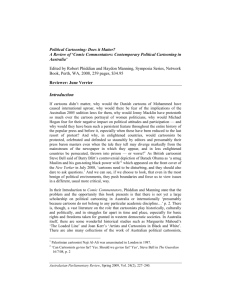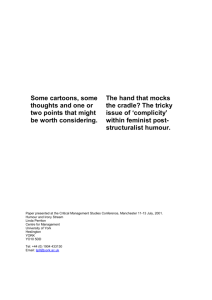Persuasive Techniques
advertisement
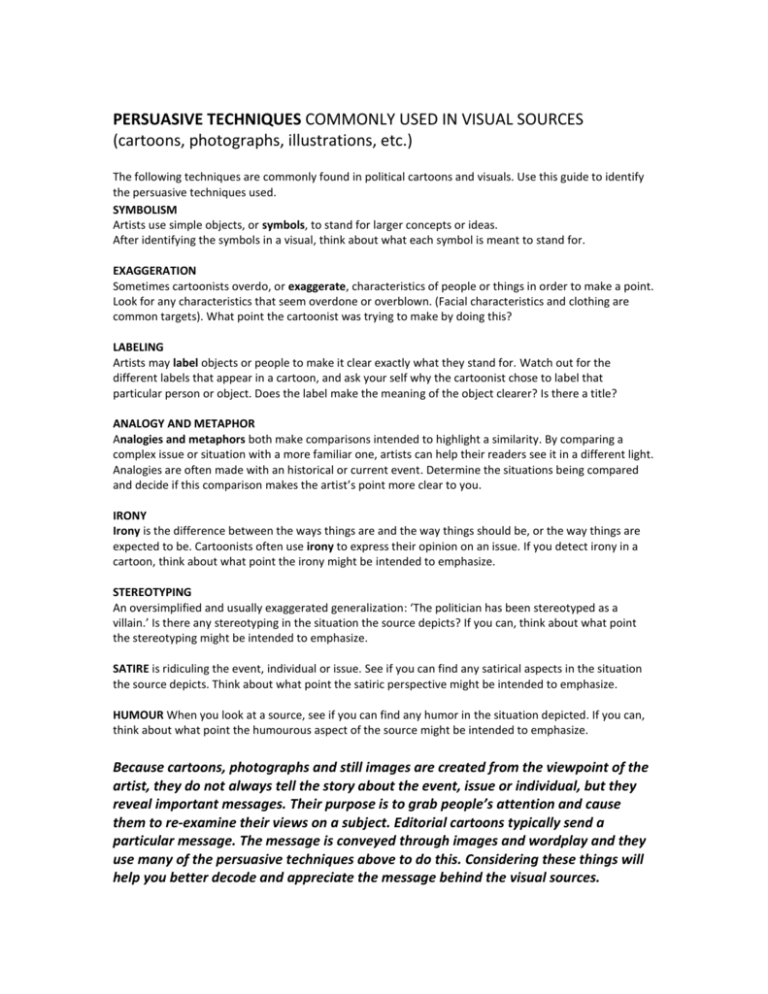
PERSUASIVE TECHNIQUES COMMONLY USED IN VISUAL SOURCES (cartoons, photographs, illustrations, etc.) The following techniques are commonly found in political cartoons and visuals. Use this guide to identify the persuasive techniques used. SYMBOLISM Artists use simple objects, or symbols, to stand for larger concepts or ideas. After identifying the symbols in a visual, think about what each symbol is meant to stand for. EXAGGERATION Sometimes cartoonists overdo, or exaggerate, characteristics of people or things in order to make a point. Look for any characteristics that seem overdone or overblown. (Facial characteristics and clothing are common targets). What point the cartoonist was trying to make by doing this? LABELING Artists may label objects or people to make it clear exactly what they stand for. Watch out for the different labels that appear in a cartoon, and ask your self why the cartoonist chose to label that particular person or object. Does the label make the meaning of the object clearer? Is there a title? ANALOGY AND METAPHOR Analogies and metaphors both make comparisons intended to highlight a similarity. By comparing a complex issue or situation with a more familiar one, artists can help their readers see it in a different light. Analogies are often made with an historical or current event. Determine the situations being compared and decide if this comparison makes the artist’s point more clear to you. IRONY Irony is the difference between the ways things are and the way things should be, or the way things are expected to be. Cartoonists often use irony to express their opinion on an issue. If you detect irony in a cartoon, think about what point the irony might be intended to emphasize. STEREOTYPING An oversimplified and usually exaggerated generalization: ‘The politician has been stereotyped as a villain.’ Is there any stereotyping in the situation the source depicts? If you can, think about what point the stereotyping might be intended to emphasize. SATIRE is ridiculing the event, individual or issue. See if you can find any satirical aspects in the situation the source depicts. Think about what point the satiric perspective might be intended to emphasize. HUMOUR When you look at a source, see if you can find any humor in the situation depicted. If you can, think about what point the humourous aspect of the source might be intended to emphasize. Because cartoons, photographs and still images are created from the viewpoint of the artist, they do not always tell the story about the event, issue or individual, but they reveal important messages. Their purpose is to grab people’s attention and cause them to re-examine their views on a subject. Editorial cartoons typically send a particular message. The message is conveyed through images and wordplay and they use many of the persuasive techniques above to do this. Considering these things will help you better decode and appreciate the message behind the visual sources.
